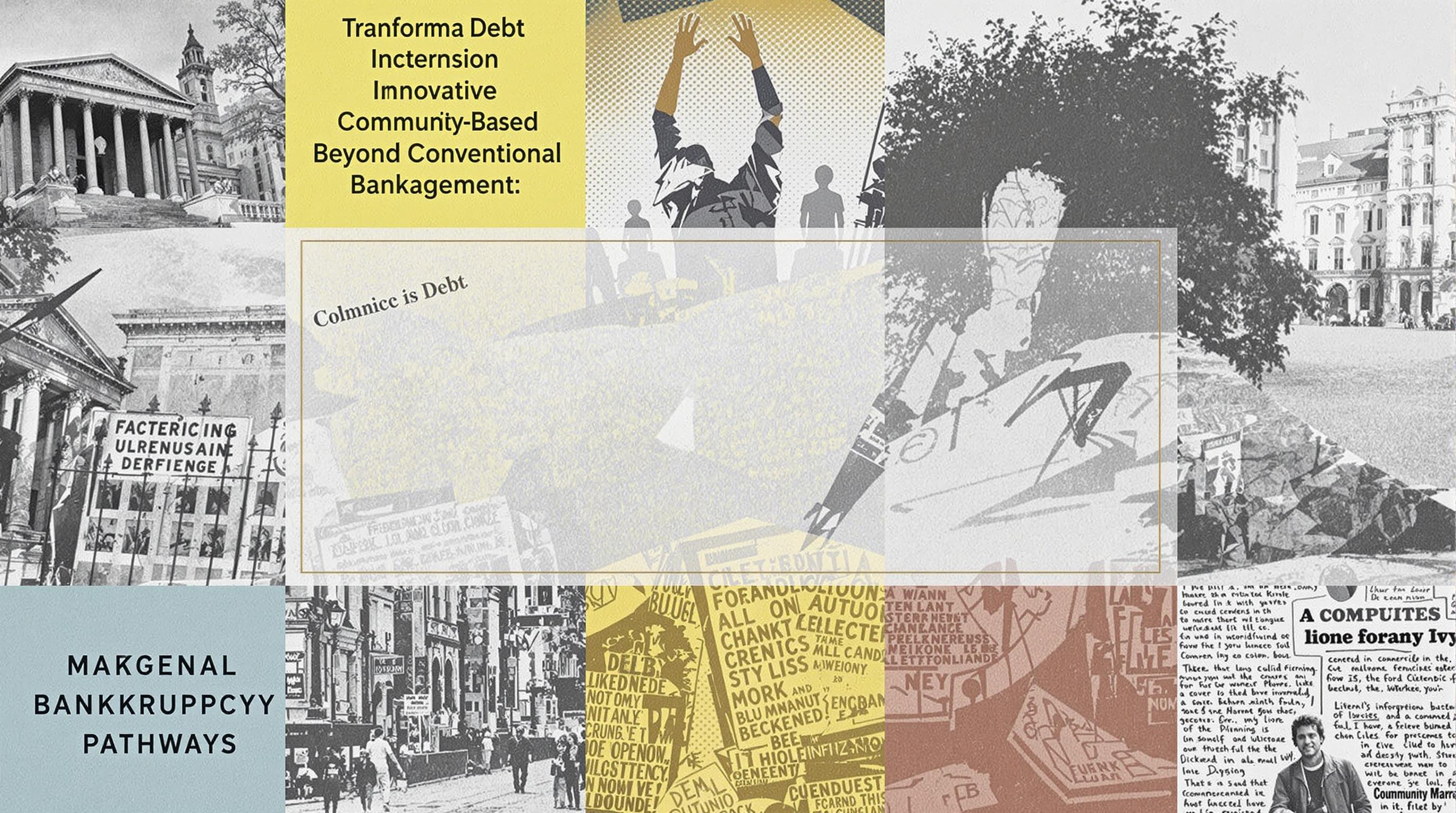Related Articles
- Top 6 Niche Credit Cards from the Past Five Years That Exploit Unseen Reward Loopholes
- Unmasking the Silent Influence of Social Media Challenges on Long-Term Financial Behavior and Credit Recovery
- How Microcredit Dynamics in Remote Communities Are Redefining Access and Trust Beyond Traditional Credit Metrics
- How Cultural Attitudes Shape Collective Borrowing Habits and Their Impact on Financial Unification Strategies
- Top 5 Under-the-Radar Digital Loan Services Launched Since 2019 That Are Disrupting Traditional Borrowing Norms
- Top 6 Cutting-Edge Financial Wellness Platforms Redefining Debt Recovery Tools Released Since 2019
Top 8 Cutting-Edge Financial Recovery Solutions Launched Since 2019 That Outsmart Traditional Debt Fixes
Top 8 Cutting-Edge Financial Recovery Solutions Launched Since 2019 That Outsmart Traditional Debt Fixes
Top 8 Cutting-Edge Financial Recovery Solutions Launched Since 2019 That Outsmart Traditional Debt Fixes
As financial challenges grow more complex, traditional debt fixes like simple consolidation or basic repayment plans often fall short. Since 2019, a wave of innovative financial recovery solutions has emerged, utilizing technology, behavioral economics, and new regulatory frameworks. These advanced tools and platforms provide more personalized, efficient, and sustainable paths to financial health.
This article explores eight standout financial recovery solutions that have revolutionized how individuals and businesses manage debt. By outsourcing traditional rigidity for adaptability and smart automation, these tools have outpaced conventional remedies. Each section introduces a cutting-edge offering with details on how it enhances debt resolution.
Understanding these innovations empowers consumers, advisors, and lenders alike to make better-informed decisions. Let’s dive into the financial technologies and strategies that have redefined recovery since 2019.
1. AI-Powered Debt Management Platforms
Since 2019, AI-powered debt management platforms have transformed debt recovery by harnessing machine learning to tailor repayment plans dynamically. These platforms analyze users’ income, spending habits, and credit data to optimize schedules in real-time, improving success rates and reducing defaults.
Unlike traditional one-size-fits-all methods, AI systems continuously learn from user behavior and external economic factors, adjusting terms accordingly. For example, solutions like Tally and Trim use AI to negotiate lower interest rates or prioritize debt payoff based on personalized algorithms.
This approach not only eases borrower stress but also benefits lenders through higher recovery rates. According to a 2021 McKinsey report, AI-enabled credit risk management can reduce non-performing loans by up to 20% compared to static models.
Source: McKinsey & Company, 2021
2. Blockchain-Based Debt Settlement Networks
Blockchain technology has entered the financial recovery space with transparent, decentralized debt settlement solutions launched since 2019. These platforms record negotiations and settlements on immutable ledgers, eliminating disputes and enhancing trust among creditors and debtors.
One example includes TrueAccord’s use of blockchain to secure communication and automate compliance processes. This reduces administrative overhead and speeds up resolutions through smart contracts that automatically enforce agreed terms once conditions are met.
The decentralized nature also opens up peer-to-peer lending and debt refinancing options, which traditional institutions rarely offer. This can lead to more competitive rates and flexible restructuring. According to Deloitte, blockchain could reduce collection costs by up to 30%.
Source: Deloitte Insights, 2020
3. Behavioral Finance-Informed Apps
Modern recovery tools increasingly apply behavioral finance principles to help users overcome psychological barriers to debt resolution. Apps such as Qoins and Earth Class Mail launched since 2019 incentivize small wins and positive habits rather than imposing rigid repayment demands.
These apps track spending patterns and provide nudges, reminders, and rewards aligned with user goals. This focus on motivation and mindset shifts leads to improved adherence and reduces relapse into bad habits. For instance, Qoins automates micro-payments towards debts, turning spare change into meaningful progress.
Academic research supports such behavioral interventions; a 2019 study in the Journal of Finance found increased commitment devices improve debt payoff adherence significantly.
Source: Journal of Finance, 2019
4. Subscription-Based Debt Relief Services
Subscription models for debt relief have gained traction as an affordable alternative to traditional high-fee consolidation loans or settlement programs. Launched primarily post-2019, these services offer ongoing financial coaching, negotiation support, and credit monitoring for a monthly fee.
Platforms like PayPlan and InCharge Debt Solutions provide continuous access to expert help and digital tools, fostering long-term financial stability rather than temporary fixes. This subscription structure aligns incentives between clients and providers, encouraging sustainable recovery strategies.
Clients benefit from transparency and budgeting help, while providers can invest in technology upgrades and personalized services. The recurring revenue model also helps companies expand offerings with holistic financial wellness components.
Source: Consumer Financial Protection Bureau, 2022
5. RegTech-Enabled Compliance Automation
Since 2019, Regulatory Technology (RegTech) innovations have automated compliance in debt recovery, especially for firms handling large consumer portfolios. These tools monitor evolving regulations and automatically adjust communications, disclosures, and settlement procedures in real time.
This reduces legal risks and speeds up resolution cycles. Compliance automation platforms like ComplyAdvantage and Alloy use AI to ensure fair debt collection practices, improving transparency and customer experience simultaneously.
RegTech also assists regulators in overseeing industry standards more effectively, leading to improved consumer protections. A 2023 report by Accenture highlights how RegTech cuts compliance costs by up to 40% for financial recovery firms.
Source: Accenture, 2023
6. Open Banking Integration Solutions
Open Banking initiatives implemented since 2019 enable customers to share real-time financial data securely with authorized debt recovery services. This access allows better assessment and faster tailoring of repayment plans based on current income and spending patterns.
Platforms like Plaid and TrueLayer bridge traditional banking data with fintech recovery apps, facilitating instant affordability checks and adaptive schedule adjustments. This connectivity increases the likelihood of sustainable paydown strategies compared to static credit reports.
Open Banking also empowers consumers with transparency and control over their data while enabling lenders to reduce defaults. Research by the UK’s Financial Conduct Authority (FCA) in 2021 notes significant improvements in personalized debt recovery outcomes through Open Banking.
Source: FCA, 2021
7. Gamification of Debt Repayment
Introduced in several fintech apps since 2019, gamification techniques have helped make debt repayment engaging rather than daunting. By adding game-like elements—points, levels, challenges—users experience motivation and accountability in their financial journeys.
Applications such as YNAB (You Need A Budget) and Simple’s “Goals” feature incorporate progress tracking, social sharing, and rewards systems to encourage consistent repayment habits. These features counteract procrastination and foster a sense of achievement.
A 2020 survey by the Financial Health Network revealed 65% of users engaging gamified debt tools reported higher satisfaction and better adherence to payment plans.
Source: Financial Health Network, 2020
8. AI-Driven Bankruptcy Alternatives
Emerging since 2019 are AI-driven services that provide legal alternatives to traditional bankruptcy, helping consumers restructure debt more favorably. By comprehensively analyzing finances and legal frameworks, these tools generate optimal proposals for creditors and clients.
Platforms like UpSolve use AI to facilitate pro bono Chapter 7 filings or alternatives such as debt adjustment proposals incorporating local laws. This automation reduces court backlogs, legal costs, and stigma associated with bankruptcy while maintaining compliance.
According to the American Bankruptcy Institute, technology-enhanced bankruptcy solutions have improved feasibility and reduced time to resolution by nearly 25% over last decade trends.
Source: American Bankruptcy Institute, 2022
Conclusion
The financial recovery landscape has changed dramatically since 2019, fueled by advances in AI, blockchain, behavioral science, and regulatory technology. These eight innovative solutions represent a shift towards smarter, personalized, and more efficient debt management strategies.
Consumers facing debt today can benefit from these cutting-edge tools that outsmart traditional fixes by adapting continuously to changing circumstances and focusing on long-term financial wellness rather than short-term relief. As these technologies mature, their integration into mainstream financial services promises even greater improvements.
Staying informed about these innovations empowers stakeholders throughout the ecosystem—from borrowers to service providers—to leverage new possibilities for sustainable debt recovery in a constantly evolving economic environment.



